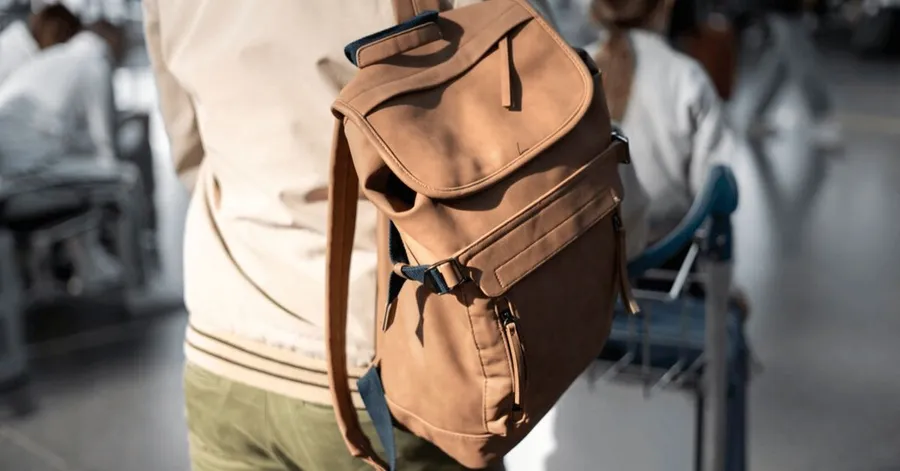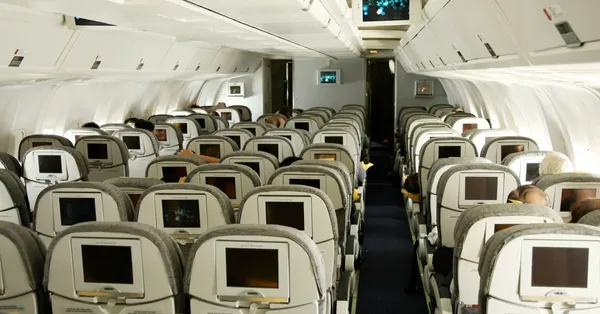Traveling by plane with a backpack is becoming increasingly popular. This raises the question: can a backpack be checked in as baggage? If so, what conditions must it meet to be transported safely and in accordance with regulations in the baggage compartment?
Find out if a backpack can be checked in and what to look out for to avoid problems during check-in.
Carry-on baggage vs checked baggage - types of baggage and their differences
The difference between carry-on and checked baggage is quite significant. Each has its own advantages and limitations that you should be aware of before traveling by plane. What's more, the rules for carrying carry-on and checked baggage differ.
Hand luggage is taken on board the aircraft and stored in the overhead compartment or under the seat. It should mainly contain essential items. It must be significantly smaller than checked baggage, but you can keep it with you at all times during the flight. This is a great option for shorter trips or to avoid additional fees. Remember also about restrictions, e.g. on liquids in containers larger than 100 ml or sharp objects.
Checked baggage must be checked in at the baggage check-in desk before proceeding to security control. Airport staff will take it to the baggage compartment, so you will not have access to it during the flight. You can pack much more in checked baggage than in carry-on baggage. However, upon arrival, you will have to wait for it to be delivered. Unfortunately, delays or lost baggage do sometimes occur.
Backpack as carry-on baggage
A travel backpack can serve as carry-on baggage and is often considered the most convenient option. It is easier to “stuff” under the seat or in the overhead compartment on the plane than a hard suitcase. What's more, thanks to its compartments, it is easier to pack a carry-on backpack and organize your belongings.
Importantly, make sure that your carry-on backpack does not exceed the permitted dimensions. These vary depending on the airline. City backpacks, for example, are ideal as carry-on luggage.
Can a backpack be checked in as luggage on a plane?
A backpack for the plane can be checked-in baggage provided that it meets the airline's requirements for maximum dimensions and weight. In most cases, carriers do not impose specific types of bags or suitcases that can be transported in the baggage compartment.
The physical parameters of checked baggage are of key importance. A travel backpack will be treated the same as a suitcase or bag, provided that it fits within the limits set by the carrier. Usually, the maximum dimensions of checked baggage are 158 cm in total length, width, and height, and 20-23 kg.
What kind of backpack should you choose as checked baggage for a plane?
When deciding on a backpack as checked baggage, it is worth choosing a model that is suitable for air travel. It should combine capacity, durability, and safety for the luggage being transported.
Trekking backpacks and hiking backpacks, designed for heavy loads and long-term use, are a great choice. They should have sturdy zippers and durable, abrasion-resistant materials. For example, it is worth choosing backpack models made of durable nylon.
When choosing a comfortable backpack for the plane as checked baggage, it is also worth paying attention to models with a front load system, which open at the front like a suitcase. They allow easy access to the contents of your luggage, help you organize the interior space better, and keep everything tidy. This way, you won't have to unpack the entire backpack when looking for a specific item.
Packing a backpack as checked luggage – what to keep in mind?
Effective packing of a backpack for the aircraft hold should be based on the principles of functionality, protection of the backpack's contents, and optimal weight distribution. Although the most important items, such as documents and electronic equipment, must be carried in your carry-on luggage, other essential items in your checked luggage should be packed with care.
Heavy items should be placed as close to your back as possible to distribute the weight evenly and keep your luggage stable. Soft items such as clothes can be used as shock absorbers. They can be used to fill gaps between harder items, thus securing the contents of your backpack against movement.
If you are carrying cosmetics and liquids in your checked baggage, place them in sealed bags, preferably made of waterproof material. They may be damaged by pressure in the aircraft hold.
Importantly, it is not recommended to carry electronic equipment in checked baggage, and in some cases it is even prohibited. This is due to safety regulations related to the risk of fire in the luggage compartment. For this reason, in most cases, electronics may only be carried in carry-on baggage.
How to secure a travel backpack in the luggage compartment?
Due to its design and the presence of numerous buckles, straps, etc., a backpack as checked baggage requires additional security measures. Proper packing of your luggage and additional precautions will help minimize the risk of mechanical damage.
Compression and hip straps should be securely fastened or hidden. If the backpack does not allow them to be hidden inside, it is worth using a special protective cover. It covers the entire bag and facilitates its transport on the plane. An alternative may be stretch film, available at most airports, which effectively protects the backpack from mechanical damage. It is also recommended to secure the zippers. This can be done with a padlock or cable ties. These provide basic security and do not hinder customs checks.
It is also advisable to mark your backpack with a distinctive element. This could be a ribbon or a colored strap. It is also worth using a securely attached luggage tag with the owner's details.
Backpack as checked baggage - what to remember?
If you want to take your backpack as checked baggage, remember these practical tips:
- Check the baggage policy of the airline you are flying with;
- Measure the dimensions of your backpack to make sure it fits within the allowable limits;
- Pack your backpack properly for the flight to protect it from damage and optimize weight distribution in your luggage;
- Secure your backpack using compression straps or protective covers, for example.


